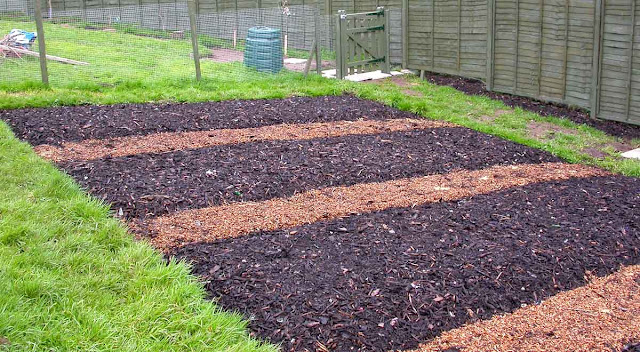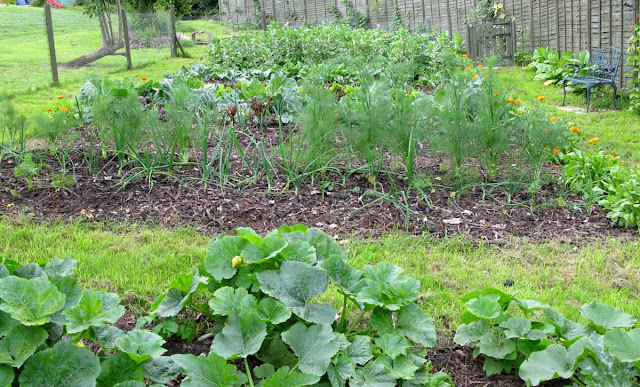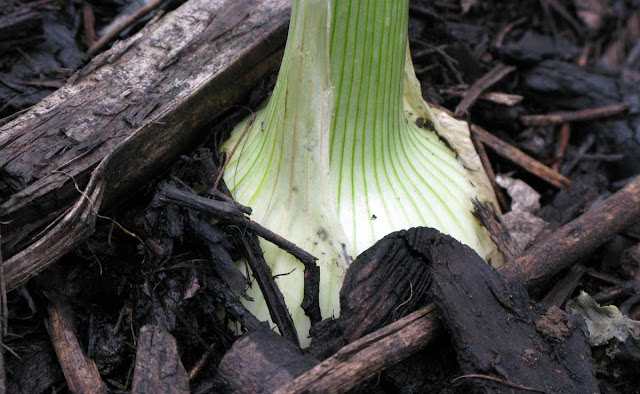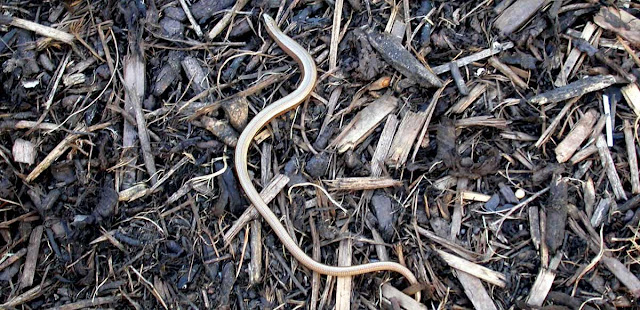
Having no compost for the mulch, we started with bags of bought bark mulch. and, following the method given in the book, we raked the soil and laid newspaper over the top, several sheets thick, then spread three inches of the mulch over that. The idea being that the newspaper will stifle the weeds and, with the mulch, help to retain moisture in the soil.
Laying newspapers, and bark mulch on top.
The finished mulch. The paths have been marked with cedar bark chips.
Onion growing through the mulch.
We planted seedlings through the mulch and had a fairly successful year. The coarse bark mulch was probably something of a nuisance, in that it provided a great place for slugs and other pests to hide, for the seedlings were much attacked that year.
A slow-worm seeks slugs in the mulch.
The newspaper laid on the soil surface certainly smothered most of the weeds and grasses, but the mulch picked up many wind and bird borne seeds, so that over the course of a year or so the newspaper had completely broken down and new weeds were growing in the soil.
The most successful mulch fabric we have used is a black woven material (not the plastic one, nor the elastic one), which has so far lasted two to three years in the flower beds.
It's possible that the reason the newspaper method didn't work for us, after the first year, was that we're in a rural area and assailed by masses of seeds from the trees and fields around. The black fabric mulch has been successful on the flower beds, but these are perennial plants, so there's no disturbance of the soil surface as there is in the vegetable garden.
The bark we used for mulching, though less expensive than many, was a strange material. There was bark in there, but also other pieces of wood and many strange and varied bits of rubbish:
Some of the contents of the bark mulch.
My best guess is that, along with bark, old furniture has been mashed up, and all the detritus that old drawers and cupboards collect had come with it.







No comments:
Post a Comment